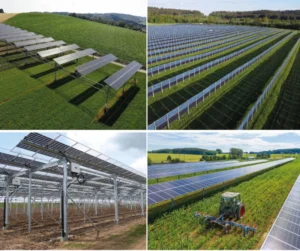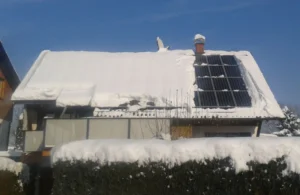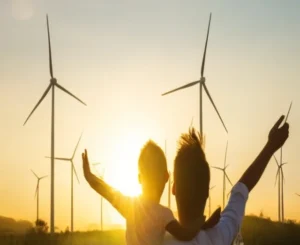Agrivoltaics: Solar Energy and Agriculture against Drought
Renewable energy is essential for mitigating climate change, but until now it has been competing with other forms of land use such as agriculture and animal farming. Agrivoltaics, on the other hand, seems to be the ideal and logical solution to several problems like against drought. It is a promising approach to balancing food and energy needs by allowing both electrical and agricultural production on the same area of land.

Indeed, climate change is leading to an increased frequency and intensity of extreme weather events, such as droughts, floods and storms. These events are straining our natural resources, including the availability of water and food. And this is where agrivoltaics comes to our aid.
Read more: The Status of Drought.
Agrivoltaics and drought mitigation
Agrivoltaics systems can mitigate the negative effects of drought on crop growth by providing partial shade. Shade reduces evaporation, both from the soil and from the surface of plants. Reducing this actually helps conserve water and improve water use efficiency. A study conducted in California showed that an Agrivoltaics system reduced evaporation by 20-30% compared to an open field. This led to a 20% increase in tomato yields.
Balance between electricity and agricultural production
There is a balance between electricity and agricultural production in Agrivoltaics systems. Increasing the density of solar panels can reduce yields, but it can also increase electricity production.
Animals also find their benefit in an Agrivoltaics system, and for them as for plants, being in the shade during the hottest hours can only be an advantage.
The correct balance therefore turns out to be a proper annual or seasonal rotation between crop fields, livestock and land rest. Agrivoltaics thus clearly represents a promising approach to balancing food and energy needs in a world that is drying up. Agrivoltaics systems not only help reduce greenhouse gas emissions, but also create new jobs and improve the much-important biodiversity.
Agrivoltaics against drought & Additional considerations
In addition to the benefits already mentioned, agrivoltaics can offer other benefits as well:
Improved product quality: The shade provided by solar panels helps prevent leaf blanching and improve product quality.
Weather protection: Solar panels can, depending on their arrangement, help protect crops and animals from extreme weather events.
Improved microclimate: Agrivoltaics systems help create a more crop-friendly microclimate with cooler temperatures and higher humidity.
Some Challenges to be faced
Agrivoltaics is still in its early stages of development, and there are still some challenges that need to be addressed before its use is consolidated.
Initial cost: Installing an Agrivoltaics system can be expensive. But in reality, no one is forcing us to start with a mega system. A scalable installation is ideal in terms of both investment and management.
Research and development: Further research is needed to optimize the design and management of Agrivoltaics systems. However, there is also no risk of doing great damage, and as we know, each area has its own particularities. These particularities must be observed on site and will be valid for that area, not in completely different climates.
Regulatory and policy framework: As always, policy comes last and at a very slow pace. A favorable regulatory framework would be urgently needed to promote and accelerate the use of Agrivoltaics.
Nevertheless, agrivoltaics has the potential to play an important, and perhaps the most sensible and comprehensive, role in our transition to a more sustainable and balanced future.
You can find a description of a great book by our partner Gs-Publisher.


One thought on “Agrivoltaics: Solar Energy and Agriculture against Drought”
Comments are closed.